If you’re someone looking to start an e-commerce business, you might be confused about which sites and platforms you should frequent to ensure that your business reaches its maximum potential.
By now, you probably know that the two best options for you are Amazon and Shopify. But which one of these should you go for? Who wins when it’s Shopify vs. Amazon?
Don’t worry; I’ve put together a detailed post that covers everything you need to know about both these platforms to make an educated decision.
Let’s get into it!
Selling on Shopify vs. Selling on Amazon
Amazon and Shopify are two of the largest platforms to develop e-commerce business.
There are some similarities between both sites, but as far as the specifics are concerned, they’re somewhat different from each other.
Shopify is a platform where potential business owners can create their own, unique e-commerce websites without needing any web development experience or skills.
If you’re an online retailer, Shopify is an alluring option for you. You can choose from more than 70 professionally designed templates and have the freedom to customize them personally.
Amazon is the world’s largest online retailer, where thousands of sellers come to list their products. It is also perhaps the most trusted eCommerce site and has become the go-to place for buyers and merchants alike.
Why choose these two platforms?
If you need more convincing about why you should opt for these e-commerce giants when looking to start your business, maybe the numbers can draw you in.
Shopify supports more than 600,000 businesses, ranging from small startups to giant corporations, that have collectively generated more than $82 billion in product sales!
If product visibility is your primary concern, Amazon solves that for you, with more than 150 million people visiting the site each month!
Is it profitable to sell on them?
Lastly, if you’re wondering whether it’s profitable to sell on Amazon on Shopify, thousands of users are running successful businesses on both these sites.
As two of the world’s most prominent e-commerce avenues, both companies draw considerable attention from millions across the globe.
All Things About Selling on Shopify
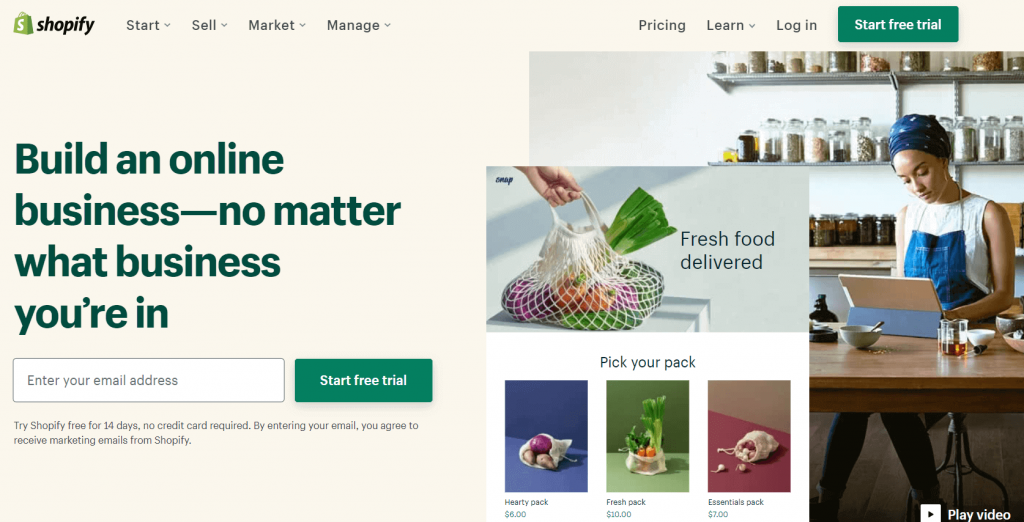
Selling on Shopify can be a daunting experience if you don’t know what you’re doing.
Lucky for you, I’ve compiled a thorough guide on what you need to know before you start using Shopify and a run-down of the various features that give the company it’s shine and sparkle.
Without further ado, let’s get into it.
Shopify Features
Here’s a quick look at Shopify’s top features:
- Easy store setup and customization
- Abandoned cart recovery
- Powerful inventory system
- Automatic tax calculation
- Logo maker
- Professional marketing$SEO services
- Multi-channel selling
Shopify features such as an in-built logo maker, an automated tax calculator, and multi-channel selling add to the brand’s desire.
What’s even more impressive is that also, if you don’t find what you were searching for on the Shopify dashboard, the unique Shopify app store is a great option to take your e-commerce game to the next level.
Shopify Costs
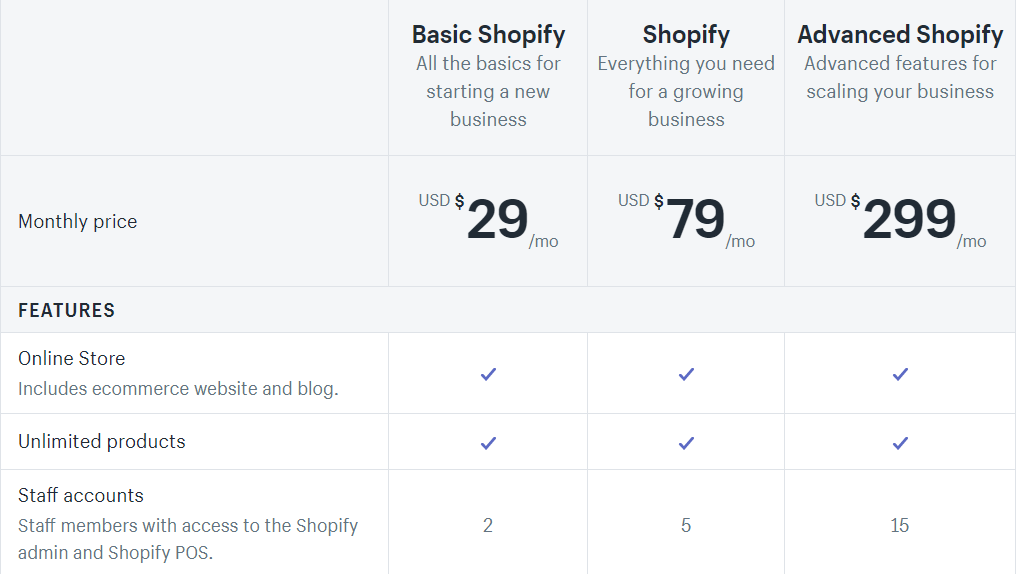
Shopify gives its customers a basic plan for $29.00 a month. This basic plan includes most of the features such as the an unlimited number of products, discounted shipping, website design, sales channels
If you would like to opt for a higher plan for more useful features, it also allows you a plethora of upgrades, starting at $79 and going up all the way to $299 a month.
How Does Shopify Work?
Are you confused about how to set up a Shopify store and start selling? Don’t be! You don’t even need to know any technical knowledge about building a website. Shopify has all you need!
Here’s a step-by-step guide that will show you how to get your store up easily and running in minutes.
Step 1: First, go to Shopify.com, create an account, and select “start free trial.”
Step 2: Once you decide on a business name, you need to customize a few settings for your store. Click the “Settings” button to open the screen shown below.
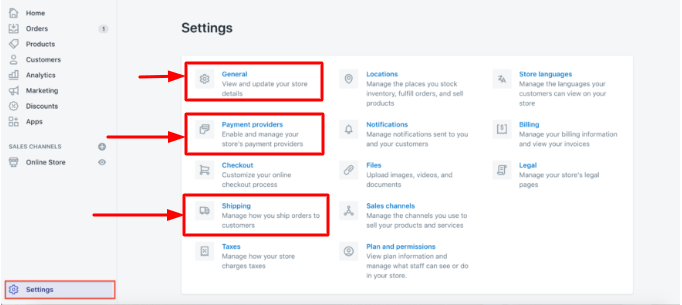
Step 3: Set up payments for your store.
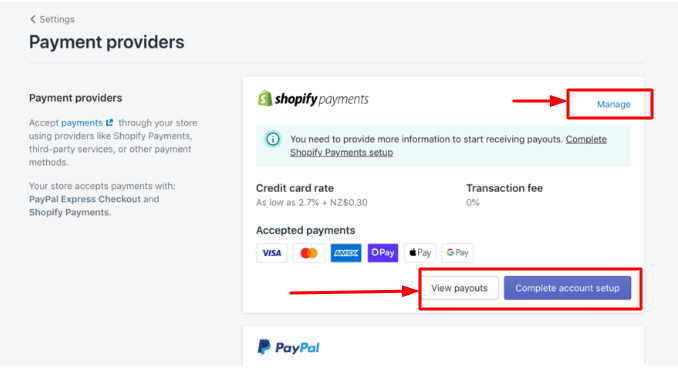
Step 4: Now, you can decide what checkout options you want for your customers. Do you want them only to be able to checkout with a customer account or only a guest account?
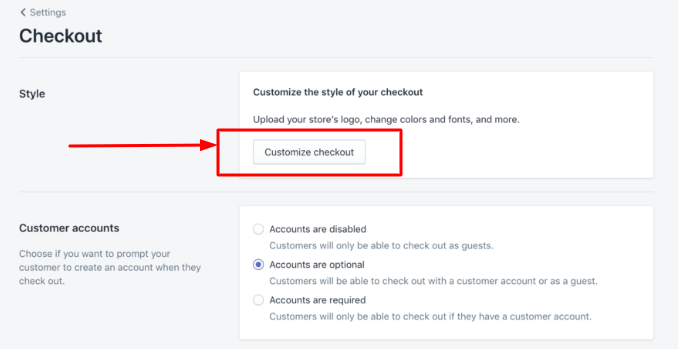
Step 5: You can modify your legal statements and settings, such as a return policy. To access these settings, click on Shopify Settings > Legal > Refund > Privacy > Terms of Service > Shipping statements.
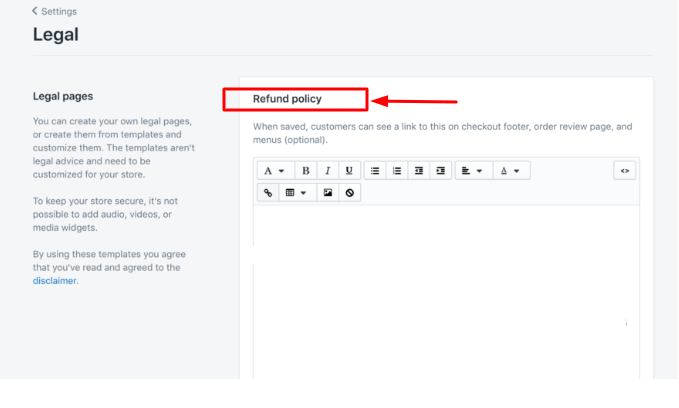
Step 6: If you’re a new seller, we recommend that you select a free shipping rate.
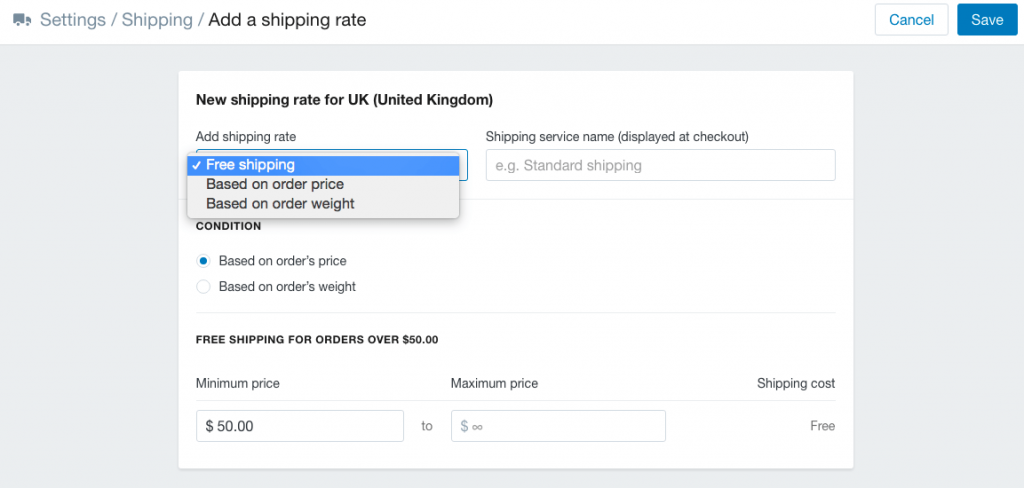
Step 7: Then, on the bar on the left side of the page, click on “Products.” Now you’ll see a blue button saying “Add products.”
This is where you can add products to your inventory. Be sure to give as many details about your products as possible.
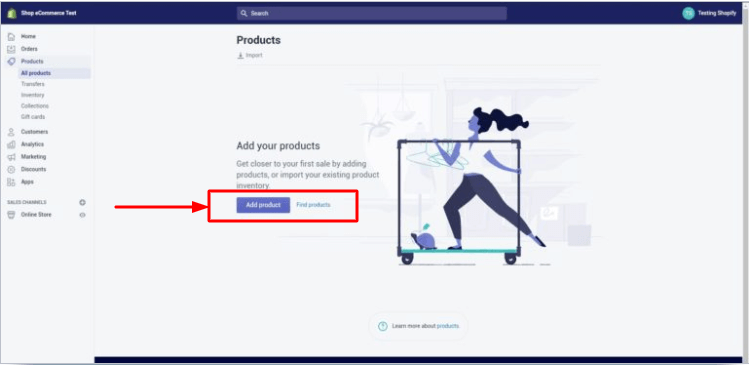
Step 8: Pick a theme from themes.shopify.com and click “Publish as my Shop’s Theme.” You can customize it too.
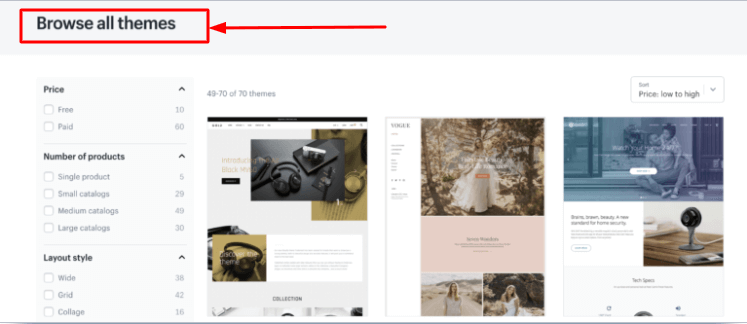
Step 9: Finally, create your main menu, then upload the main banner and a footer. With that, congratulations! You’ve successfully set up your first online store on Shopify!
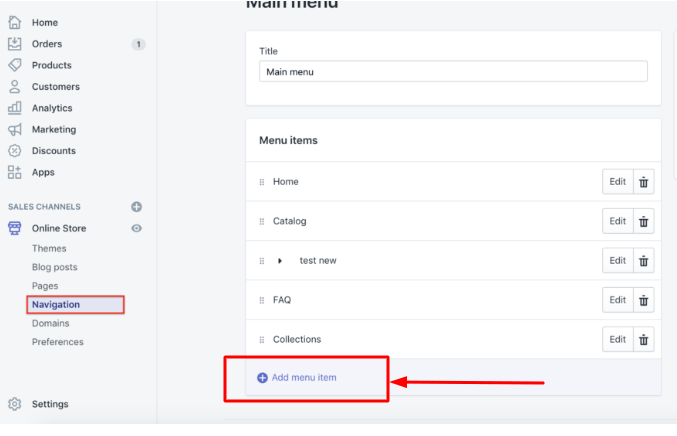
Payment Methods
The best part about paying with Shopify is that it gives you it’s own payment option, Shopify Payments.
There’s no transaction fee if you choose to use this payment method. Other than that, Shopify offers more than a hundred different payment methods, including Amazon!
The transaction fees for most third party payment methods range from 0.5% to 2% based on the specific service.
Shipping Options
Shopify offers three methods for shipping, namely, shipping, local pickup, and local delivery, but in most cases, sellers have to do the hard work themselves.
With Shopify, you have to take care of the logistics of shipping yourself. They provide various tools to help you manage the shipment process smoothly but don’t offer a complete logistical solution.
This does, of course, add to your burdens as a seller.
Shopify businesses often have to use third-party logistics providers to fulfill their orders, such as USPS, UPS, or DHL Express.
Is a Shopify store worth it?
Shopify is undoubtedly a great platform to create your e-commerce website, but it requires serious commitment and a high amount of energy.
A platform that allows you to build and customize your business the way you want is undoubtedly worth it.
A Shopify store is one of the best ways to develop an e-commerce brand and a strong business presence if you’re a seller.
How to promote your Shopify store?
Indeed, Shopify doesn’t attract the sheer volume of customers and visitors that Amazon does. So if you’re looking to promote your Shopify store, you’ll have to employ smart marketing strategies.
We recommend that you utilize email marketing campaigns, ad services, personalized shopping, and a memorable social media image.
After all, it’s all about creating a brand that people want to see more of.
The good news is that Shopify is right with you every step of the way, giving you several marketing tools to explore and work with.
See more: How to Build a Powerful Audience with Facebook Ads
All Things About Selling on Amazon
Amazon’s business model differs from Shopify in several ways. In this section, we’ll be looking at some of those differences, along with the many unique benefits that Amazon has to offer.
Let’s get right into it.
Amazon Features
Amazon has many savvy tools to help develop your brand. These include, but are not limited to, targeted advertisements, Amazon Handmade, and FBA.
Amazon FBA is one of Amazon’s most popular features since it takes the tedious task of shipping from your hands and places the responsibility of packaging, storing, and shipping your products solely on Amazon.
What are the requirements for selling on Amazon?
The thing about Amazon is that it is incredibly simple to start selling. All you have to do is create your account, enter required details such as your business information and credit card number, fill each set-up page, and once you, you can start selling.
After you’ve registered an account, you need to create a product listing, attract customers, sell your products, have them shipped, and collect your money. Simple, right?
Of course, Amazon does quite a lot to make this experience as swift as possible with schemes like Amazon FBA that allow you to focus exclusively on selling without the burden of shipping holding you back.
What are the types of seller accounts on Amazon?
There are three main types of seller accounts on Amazon:
Amazon vendor
This is a term used for manufacturers and distributors who sell products in bulk to Amazon. It works as Amazon’s suppliers, which means outsourcing, packaging, storing, shipping, and customer service duties to Amazon.
Professional seller
Sellers that opt to become professional sellers have to pay a monthly fee of $39.99 to Amazon. They are not charged a $0.99 fee for every item they sell. Also, they get access to some exclusive benefits, such as inventory tools and reports.
Individual seller
Individual sellers are usually small-scale sellers who don’t sell more than 40 items a month. The sellers don’t have to pay a monthly fee like professional sellers do, but they are charged an item fee of $0.99 per item sold.
See also: Complete Guide on How to Create an Amazon Seller Account
What are the costs of selling on Amazon?
There are two selling plans for Amazon third-party sellers:
- The Individual Selling Plan – There are no monthly fees, but you have to pay $0.99 for every sale you make. This plan comes with minimal features.
- The Professional Selling Plan – This one has a monthly fee of $39.99. However, you still have to pay some additional selling fees depending upon your products.
Moreover, if you subscribe to Amazon FBA, you might have to pay fees from $2.41 to $137.3 per unit.
Since Amazon stores your products, you’ll also have to pay inventory storage fees every month, depending on the dimensions, weight, or volume of your products.
Read More: Your Newest Guide to Amazon FBA Fees in 2020
Payment Methods
Now let’s look at how Amazon transfers payments to you if you sell something on the platform.
Amazon requires you to provide a valid bank account on your seller account where they will transfer your money. Amazon does not pay to online systems like Paypal.
When there are no issues with your account, Amazon transfers the money to you either via an Automatic Clearing House or through electronic transfer.
Secondly, your transfer details may show that Amazon has paid you from multiple sources instead of one.
Here’s what happens: If it’s a transfer where the buyer agrees to pay for the product after their order is shipped to them, Amazon Services LLC makes the payment.
However, if it’s a transfer where the buyer has agreed to pay before or at the time of the shipment, Amazon Payments, Inc. makes the transfer.
See also: Payoneer Vs Worldfirst – Which is Best for Receiving Amazon Payments?
Shipping
Fulfillment by Amazon or FBA is a service provided by Amazon that takes care of storage, shipment, and returns of your goods.
Each seller is charged differently, depending upon the storage space they take and the number of orders Amazon fulfills for them.
Conversely, shipping can be a completely different experience for you if you opt for the Fulfilled by Merchant (FBM) fulfillment method.
This method is as simple as it sounds, really. You, as a seller, are responsible for storing your own good, packaging them, and transferring them.
Amazon does not get involved. You have the entire freedom to rely on whichever service provider you choose.
See also: FBA vs. FBM: Which Fulfillment Service is Best for You?
Is it too competitive or still profitable to sell on Amazon?
Competition on Amazon varies from product to product.
Some categories on Amazon are pretty saturated and hardly leave any room for new sellers. However, there still are other categories where new sellers can make a name for themselves.
With that in mind, Amazon is the largest shopping website in the world, so it can still be incredibly profitable to sell on Amazon, especially if you employ the right marketing strategies and campaigns.
Shopify vs. Amazon: Pros and Cons
Here we list the pros and cons both for Shopify and Amazon, which you can get a better understanding of what are their differences.
- Your brand has a unique identity and image since you get to create it exactly how you want it to be.
- Shopify has some of the best e-commerce tools on the market.
- It offers many different payment options.
- It’s easy to use with a lot of useful apps.
- The store templates are very well-made and work well even on mobile devices.
- It has an email tool that allows you to make an initial subscriber list.
- There are so many supported Apps that can help you automate your business.
- You have to take up the burden of shipping and marketing your brand.
- You have to pay transaction fees on third party payment options.
- Shopify payments only work in a certain number of countries.
- Some features, such as adding text boxes, etc. are complicated.
- You cannot focus exclusively on selling because you have an online store to maintain and update.
- It has incredibly high viewership and outreach.
- Lucrative services, such as FBA, make it easier to focus on selling.
- Massive international outreach, giving you visibility in other countries’ markets.
- It has very low marketing costs.
- Amazon Prime and buy box priority are huge boosts for sales.
- Lots of competition can make it difficult for your brand to conquer the market.
- It is considerably harder to create an impressive brand image.
- Amazon charges high commissions for every product you sell.
- Amazon’s order management system can be a bit messy.
Which Is the Best for You?
It all comes down to what you want to achieve and the type of product you’re offering.
Shopify allows you to build your website and showcase your products while running and maintaining your digital market.
Amazon allows you to create personalized product listings and specify a list of keywords that help users search for your products on the database.
The main difference is that although you cannot build your e-commerce website with Shopify, you can still list your items on Amazon marketplaces and sell them there.
Amazon and Shopify both offer excellent business models that come with their perks.
Some sellers prefer to use them together while some like to channel their energy on just one platform.
There are two main strategies we’d recommend to new sellers: Always start with Amazon or use Amazon and Shopify together.
Read more about how to connect Shopify with Amazon: Complete Guide for Shopify Amazon Integration to Win More Sales
Conclusion
Amazon is the real winner when it comes to building a successful online business.
Amazon’s massive audience, ease of use, Amazon FBA, and quicker set-ups make it the more efficient option for anyone looking to start an e-commerce business.
Shopify is undoubtedly a great platform to create your e-commerce website, but it requires serious commitment and higher amounts of time and energy.
Our recommendation for new sellers? Start from Amazon and build a Shopify store later if you want.
Happy selling!
Related Reading:
Amazon Long Term Storage Fees: 5 Tips FBA Sellers Should Never Miss
Oberlo Review: Sell Your Product on Shopify with Dropshipping
Complete Guide for Shopify Amazon Integration to Win More Sales
Best Amazon Alternatives For Buyers and Sellers
How & Why to Drive External Traffic to Your Amazon Listings
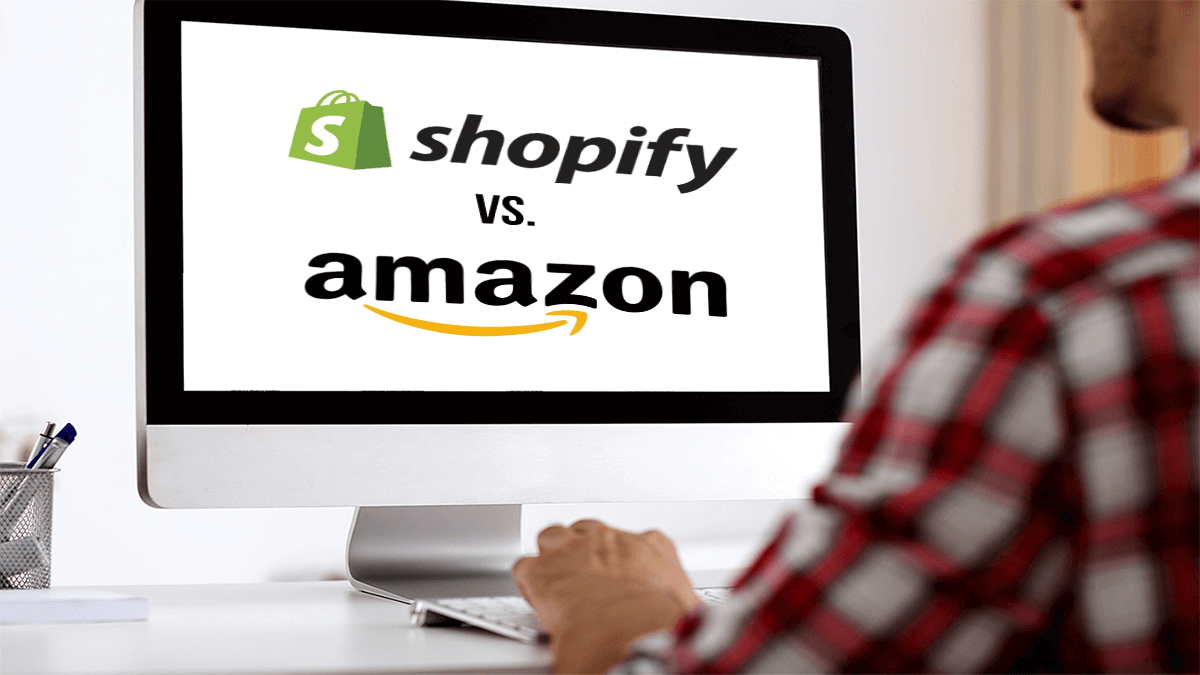
Leave a Reply
You must be logged in to post a comment.